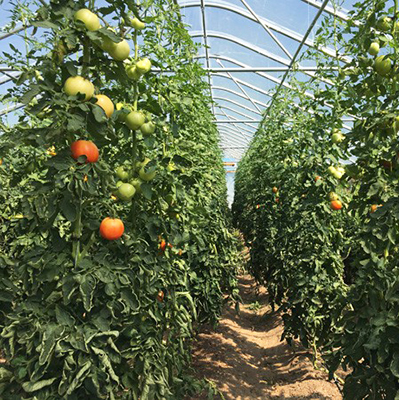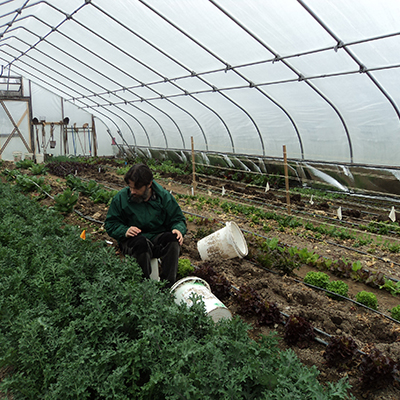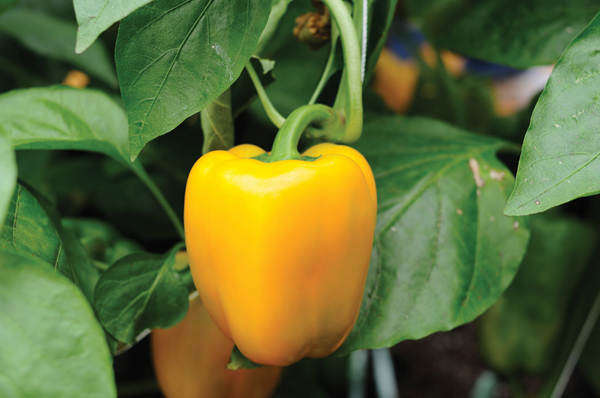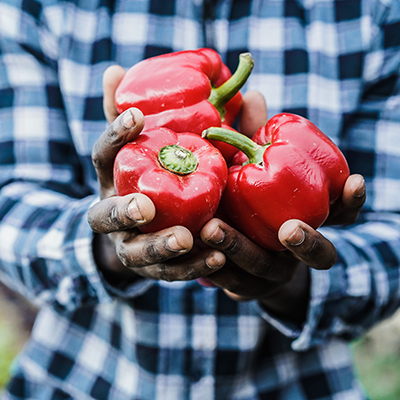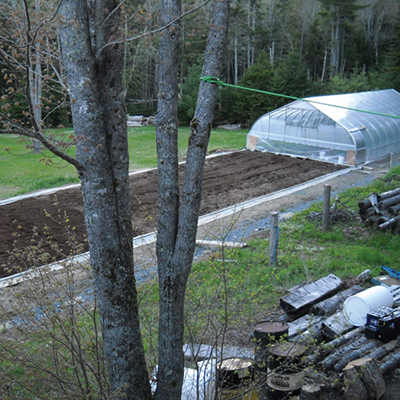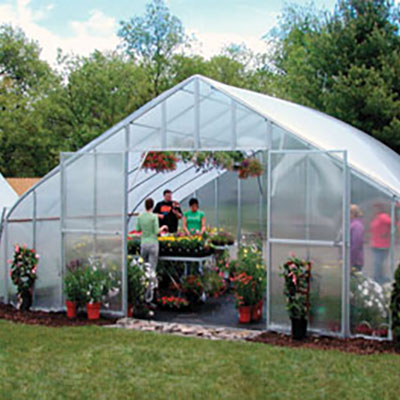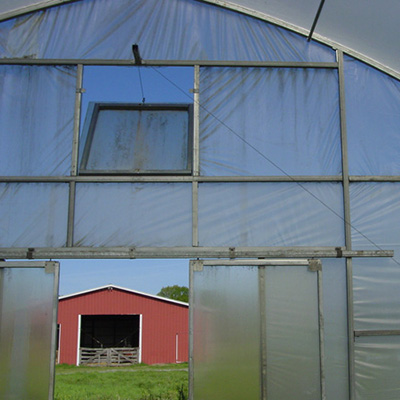Last winter, we had an outbreak of downy mildew on stock (Matthiola incana) in our greenhouses. We had a loss of 52 flats, 128-cells double seeded, which was about 13,000 plants. At around $1/stem, that’s a lot of plants and potential money in the trash, and according to our accountant, not something we could write off as a loss. It was heartbreaking, and annoying because it caused a gap in our availability right around Mother’s Day. Even with the loss of 52 flats, stock was still our number 3 crop to florists for 2015. We were projecting it to be number 1, so we knew we had to do something to prevent future loss.
We have spent the past year learning about disease management on flowers, especially in the greenhouse in winter. In this article, I’ll relate our experiences and what we learned from speaking with growers and other people in the industry, university folks, and our own research.
The problem with stock started, we think, in our propagation house, which is heated to 60°F for seed starting, but then it spread out to our minimally heated greenhouses, which are kept at about 40°F. The Ohio State University plant pathologist we consulted said it could be two possible strains of downy mildew, one specific to stock (Peronospora matthiolae) and the other specific to brassica plants(Peronospora parasitica subsp. brassicae). Stock is in the Brassica family. Because downy mildew is host-specific, we don’t necessarily need to worry about this strain spreading to other types of plants in the greenhouse, but we do still have to be careful not to create favorable conditions for other types of diseases. For example, there is another downy mildew, Peronospora antirrhini, that affects snapdragons.
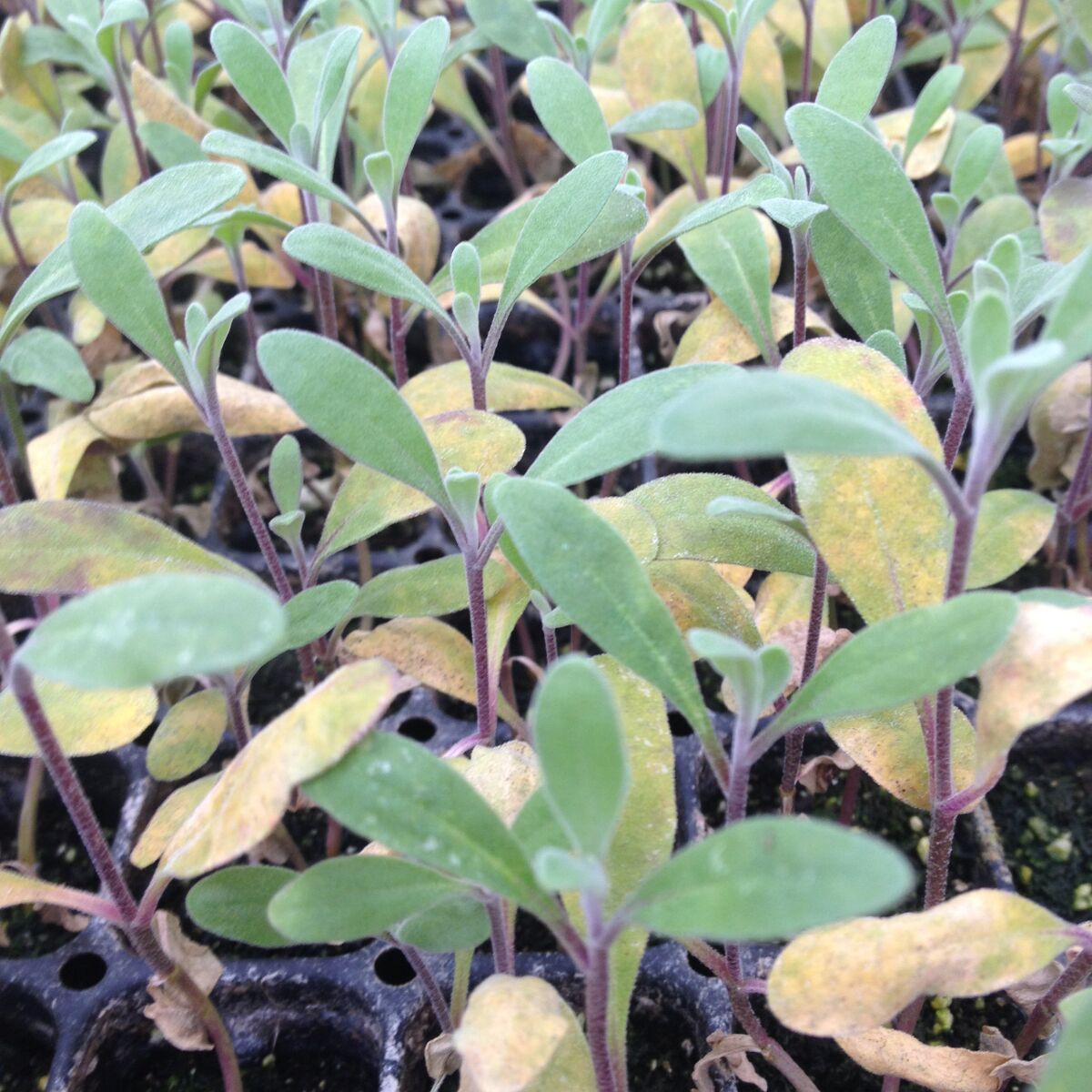
Below: The first sign of downy mildew is yellowing on the leaves, as with this flat of stock seedlings in the top photo. Photos by Sunny Meadows Flower Farm.
Downy mildew is different from the powdery mildew that you may see in the fall on plants. Powdery mildew is in the air; with cool damp, temperatures it finds a home on the tops of foliage. We treat powdery mildew with Triact, a neem oil derivative. Some growers alternate milk and a baking soda/horticultural oil mix.
Downy mildew is a separate kingdom of organisms, more like an algae than a fungi. It lives in the soil for up to 15 years, spreads through the air, and resides on the underside of the leaves. You can see it on the top of the leaves as a yellow splotchiness, but if you flip the leaf over, the underside will have white fuzzy mildew. The spores form little upside down trees at night called sporangia. The zoospores are released in the morning.
Strategies for preventing and dealing with downy mildew and other diseases consist of four parts:watering, ventilation, sanitation, and temperature management.
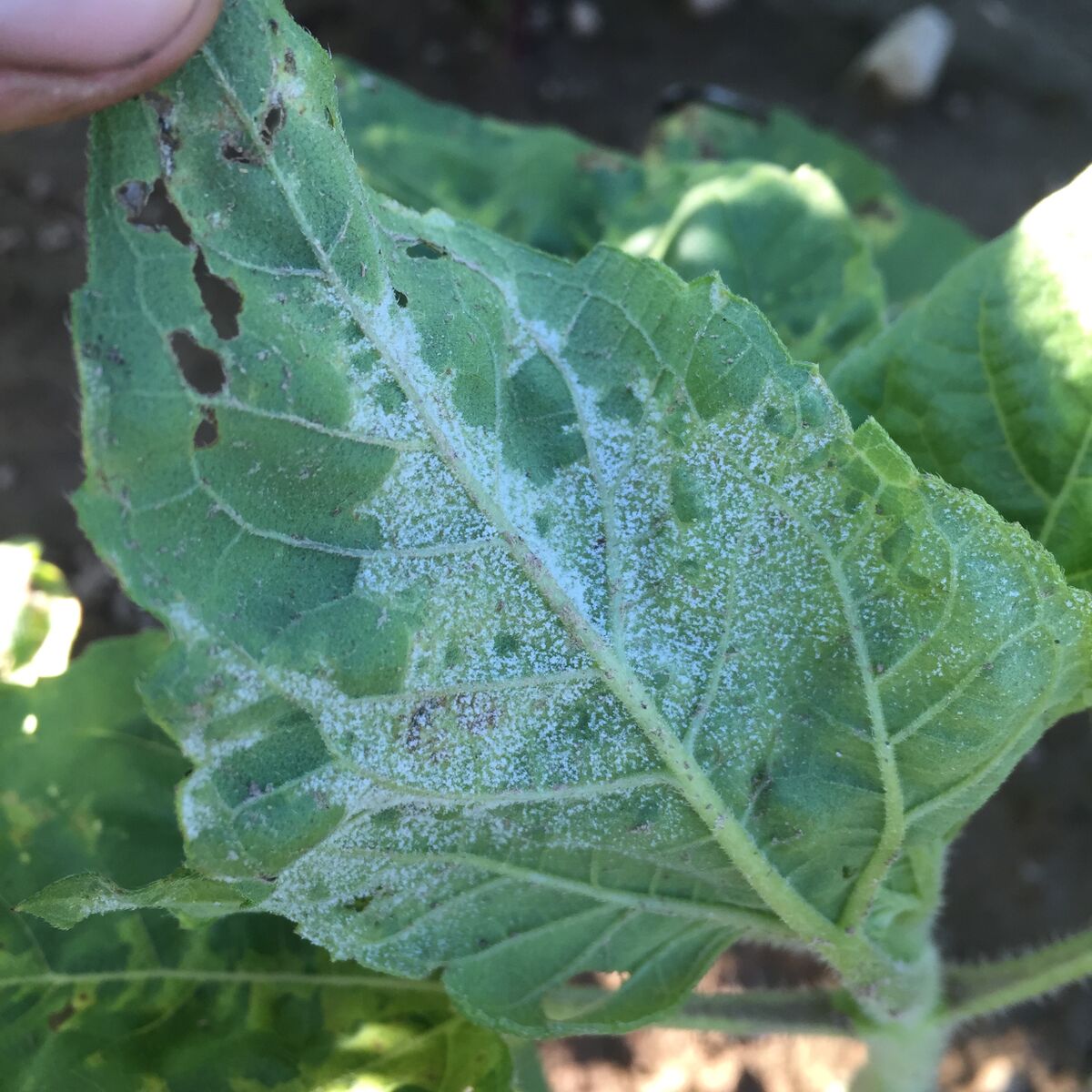
The undersides of the leaves in the photo above show the characteristic white fuzzy spores of downy mildew.
In the greenhouse
Watering in the winter, you should err on the dry side, rather than keeping everything wet. Steve says he is a recovering overwaterer. In the winter when days are short and cloudy, greenhouses are humid and transpiration is low, so there may be multiple days in a row when nothing needs to be watered. This is much different than in the summer on hot, sunny days when you are watering daily.
Overwatering anytime of year can cause damping off or other root rot issues. We found helpful a suggestion to use a scale of 1 to 5 in regard to soil moisture-, 1 being completely dry, and 5 being sopping wet. You can feel this in flats by lifting them up to feel how heavy they are. When flats are germinating, you want to keep the seeds moist on top, so you can use a germination chamber or a misting wand so as to not overwater. Once the first cotyledons have emerged, then the situation changes. You want to take flats to a 4 on the moisture scale and then let them dry out to almost a 1 before you water them again. Water them right before the plants start to show signs of wilt on the edges. One grower told us not to water until the plants reach out and grab you. The air in the soil mix encourages root growth, whereas keeping soil wet makes plants leggy, especially in low light. It seems elementary, but we never thought of air being such a crucial element in the root growing process.
Below: The author in the winter greenhouse with stock before downy mildew spread. Below, a closeup of healthy ‘Katz Apricot’ stock beginning to bloom.
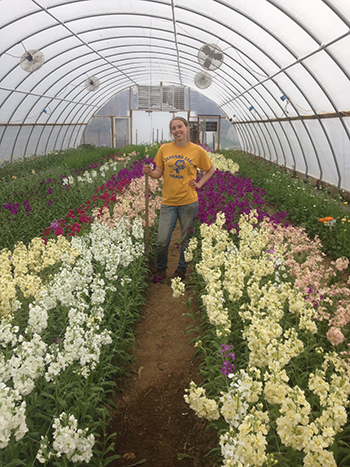
The author in the winter greenhouse with stock before downy mildew spread.
Venting in the winter is important, even if there isn’t any sun and it’s not too hot in there. OSU suggested that we vent even if that means we are heating at the same time, just to get an air exchange in the greenhouse for warmer, drier air. Downy mildew loves cool, damp conditions, so it is critical to decrease the relative humidity below 85%. We were heating the propagation house to 55°F and the production houses to 45 °F, so we increased the temperature in the houses, too. Upon their visit to the farm, OSU experts told us we had enough fans for vertical air movement, which should have also helped with preventing cold spots where condensation develops. Having further spacing of the plants would cause a less dense canopy, but we all know greenhouse space, especially heated, is expensive real estate. We are going to try another year at this spacing, hoping that proper greenhouse management and preventatively treating the area will be enough.
Sanitizing your houses occasionally is very important to keep down the prevalence of disease issues. We bought a few of our greenhouses used and didn’t think about potential disease issues they may have brought with them. Greenhouse benches made of wood are difficult to get totally sanitized with the deep grain of wood being impossible to clean. The benches we had were from an old farm stand up the road, used for years of plant sales in their displays, including plants in the brassica family which may have been the origin of the disease inoculum.
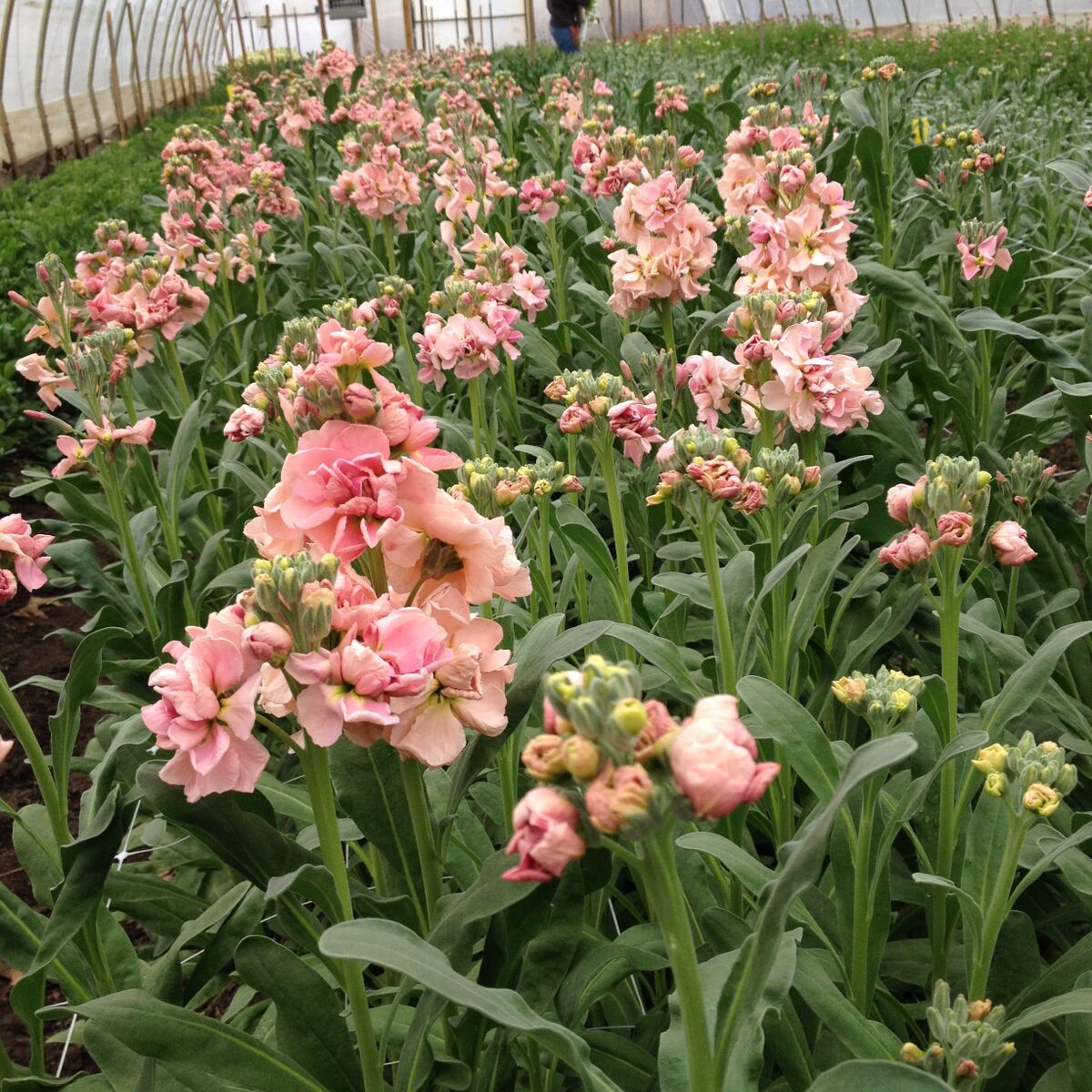
A closeup of healthy ‘Katz Apricot’ stock beginning to bloom.
We did a full clean-out of the prop houses. We swept up any debris and pulled all weeds along the edges, and then used Greenshield to sanitize all floors, walls, benches, and other surfaces. This product cannot come in contact with plant tissue and is not OMRI listed, so next time we will use SaniDate for sanitizing houses. We also replaced the benches in the prop house with some used metal benches we purchased from a retiring farmer. In the future, we also will sanitize all flats before seeding them.
To help us with temperature management and to better monitor greenhouse conditions, we purchased a system called Temp Alert. This system monitors the greenhouse temperatures, and calls (and texts) us when the temperature is out of the accepted range. That way we know when the greenhouses need to be vented or if the heater stops working. We have been out there in the dead of night to relight the pilot light, so it has saved crops. It also helps prevent the greenhouse from getting too hot. There are days when you don’t realize how hot it gets in the greenhouses, especially if it’s only partly sunny. (And it allowed us to go on vacation in February last year and help communicate to the farm sitter when the greenhouses needed to be opened… yay vacation!) You pay a monthly fee for the service, but we turned it off for the summer when our greenhouses are just permanently open. It doesn’t require a phone line or Wi-Fi like some of the other services we looked into.
In the hoophouses
The downy mildew also showed up in all the houses we had Matthiola planted in the ground — three heated, two unheated. Once the leaves are infected enough, they fall off, but most of the blooms made it through. When we started having issues, we used Zerotol on plant material and beds for sanitizing. This is a peroxide based OMRI listed product that oxidizes fungi spores on contact. Zerotol is considered a PAA or peracetic acid, which means that only certain injectors can be used, so we used our backpack sprayer instead of running it through a hose for foliar spray. We typically try to use organic practices, but OSU told us we had a “raging infection”, so we made the decision to use something conventional. We spoke with some other industry folk and used Aliette to spray on the flats and the plants that were not in bloom.
All of the plants that made it out of the flats made it to flowering stage. Fortunately the plants weren’t dwarfed by the disease, as happens on downy mildew infected sunflowers. We were able to get salable flowers, whether it was florist quality, or just for bouquets. When harvesting, we didn’t put any infected plant material in the compost. Anytime we harvested stock that had downy mildew on the leaves, we stripped them into a separate pile and took the foliage back to the woods to dump it. Since downy mildews persist in the soil, we didn’t want to be spreading the disease through our compost.
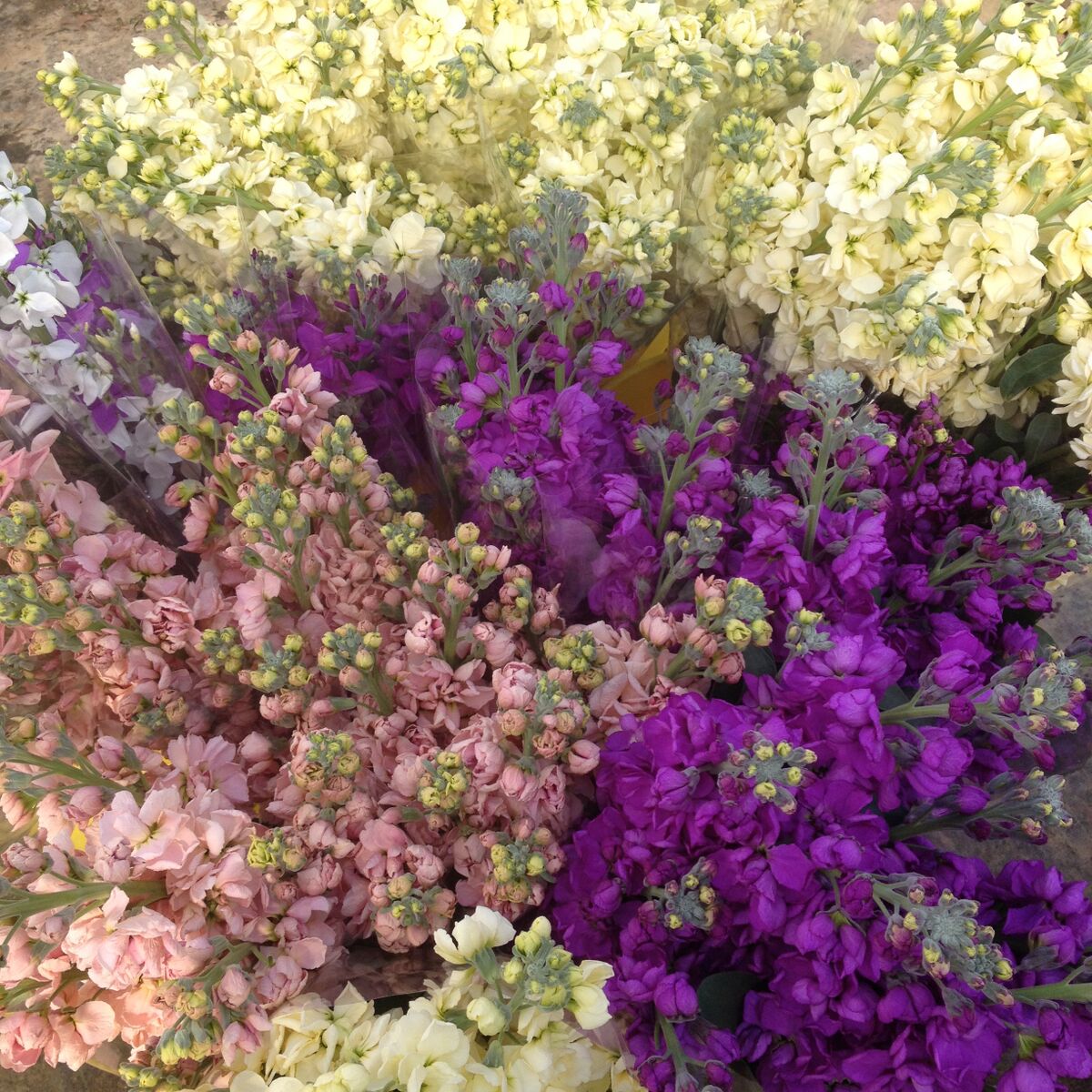
Still a successful crop: Stock from the winter greenhouse is shown bunched, sleeved, and ready for delivery to florists. The varieties are ‘Katz’ Apricot and Purple and ‘Cheerful’ Yellow.
Keeping things on the drier side in the beds also helps. We have had issues with Phytophora (a root rot disease), which has significantly decreased by just keeping the bed drier. With our soil, which has a high water table in the winter, and snow melting, keeping the beds on the edges of the greenhouse dry is important. We built semi-raised beds by tilling and digging out the walkways, placing that soil into the beds. Eventually we would like to put walls on the edges of the raised beds, but that is an investment for the future.
Another tip is to run a hydrant into each house if you plan on winter production. We did this when we added heat and electric to some of our greenhouses, and again when we dug drainage on the outsides of our tunnels. This will cut back on the number of hoses we have to drain during winter production. So if you are still building infrastructure, do it! Draining hoses is no fun when it’s cold and wet.
We will definitely be doing some more research this winter to continue educating ourselves about diseases and lots of other things because as a farmer, that’s what winter is for!
Gretel Adams is the co-owner of Sunny Meadows Flower Farm in Columbus, Ohio.
.png)

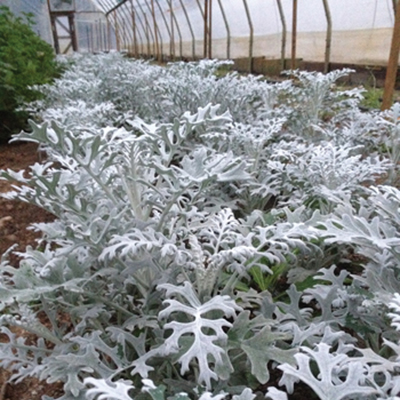
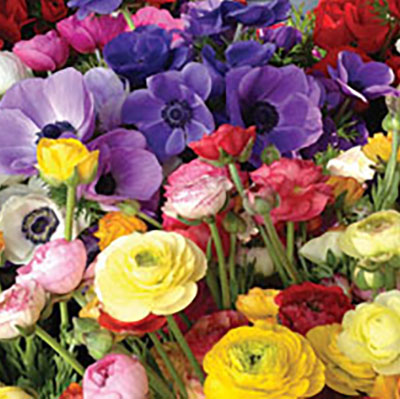
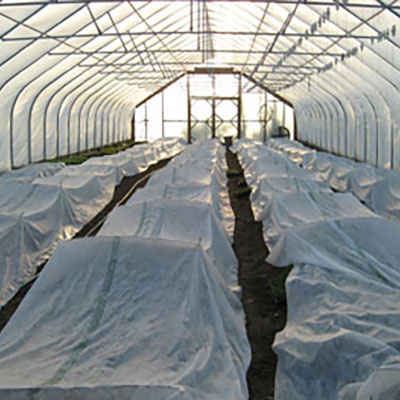
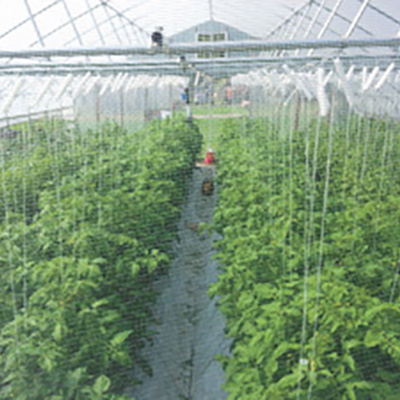

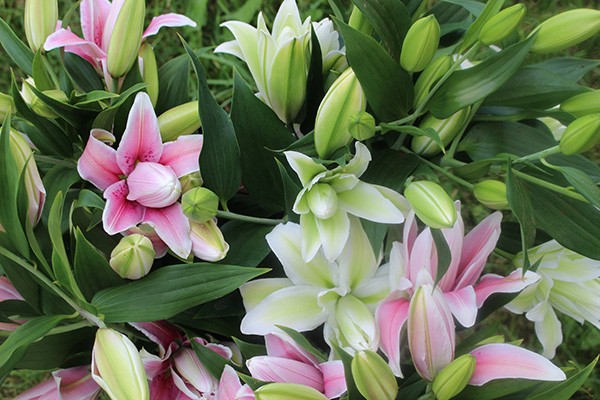 As soon as we start driving our routes in the spring our customers ask us when we’ll have roselilies. They’re that popular and have become a signature crop for us. They’re basically a type of oriental lily, but with multiple layers of petals, and without stamens and pistils (i.e. no pollen!).
As soon as we start driving our routes in the spring our customers ask us when we’ll have roselilies. They’re that popular and have become a signature crop for us. They’re basically a type of oriental lily, but with multiple layers of petals, and without stamens and pistils (i.e. no pollen!). 
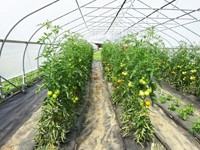

 Prairie Garden Farm has been growing cut flowers for florists and studio designers since 2010. As we’re on an exposed hillside in west-central Minnesota, we’re dependent on protected culture to grow quality flowers. This article describes our approach – planning, financial, and operational details - that helps us make the most of our structures.
Prairie Garden Farm has been growing cut flowers for florists and studio designers since 2010. As we’re on an exposed hillside in west-central Minnesota, we’re dependent on protected culture to grow quality flowers. This article describes our approach – planning, financial, and operational details - that helps us make the most of our structures.